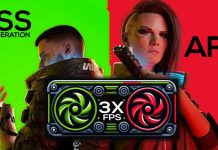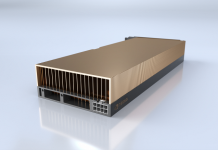Last updated on December 8th, 2022 at 02:34 pm
Interview with NVIDIA on Ray Tracing Support and Exclusive Technologies
Real-time ray tracing effects will become widespread in next-generation games. NVIDIA has supported the technology with RT hardware cores since the launch of the Turing architecture and has even extended support to the Pascal generation through driver updates, even though these cards do not have hardware blocks. The company responded to WCCFTech on a number of questions in this area.

With the upcoming release of next-gen consoles and Radeon RX 6000 Series graphics cards, the talk of ray-tracing effects in games has become even more relevant, but it also raises some questions from consumers and enthusiasts. AMD recently announced support for ray tracing and which games will be compatible with its accelerators: “AMD will support all games that use ray tracing using industry standards such as Microsoft DirectX 12 DXR or the upcoming Vulkan Raytracing API from Kronos … Games using proprietary APIs and ray tracing extensions will not be supported. “
The information on proprietary technologies has attracted the most attention. This is odd as it was recently reported that Intel is working with Kronos to support the open-source ray tracing API, but will consider using NVIDIA extensions if more developers start using them. So NVIDIA hasn’t closed its technologies to other companies? In general, there are questions, and the journalists of WCCFTech decided to ask Brian Burke from the NVIDIA marketing department for clarification.
– What would you like to call ray tracing games that use exclusive NVIDIA technologies?
– The vast majority of games released with ray tracing support use the industry-standard Microsoft DirectX Ray Tracing (DXR ) API. We are aware of three exceptions: Quake II RTX, Wolfenstein: Youngblood, and XJ 3, which use NVIDIA ray tracing extensions for Vulkan.
– Does NVIDIA support using native methods to add ray tracing to games?
– We support the use of industry-standard APIs such as DXR and the upcoming expansion of Vulkan Ray Tracing. In anticipation of the release of the official Vulkan Ray-Tracing extension, we allowed Vulkan developers to implement ray tracing through the NVIDIA extension.
Why did NVIDIA use extensions that will only work on NVIDIA GPUs in Quake II, Wolfenstein: Youngblood, and XJ 3?
“We believe in the joint application of both fast innovation and open standards. At the time these first traced games were being developed, the Vulkan working group had yet to release any specs, so using a vendor extension was the only way these developers could leverage the new technology and enable our customers to enjoy ray-tracing effects. It also helped gather feedback for the specification developed by the Khronos group. Using early vendor extensions is a common step in the standardization process.
– What does this process look like?
“The creation of each open standard goes through several phases as new functionality gains wider industry support. Vulkan takes advantage of the new functionality through extensions to full integration as a standard. For important new API areas, usually, the first hardware vendor with this functionality releases an extension to provide early support and the ability to gather feedback from developers. When several OEMs are interested in creating a common standard for new functionality, Khronos offers these companies a well-proven process to collaborate and develop an open Khronos standard or extend the KHR API. For important new Khronos, features often choose to distribute a preview of the KHR extension to provide feedback to the industry in parallel with finalizing the specification and conducting compliance tests. When all key party feedback is included in the specification, the final version of the KHR extension is released and passed conformance tests so that any hardware vendor implementing the specification can formally meet the requirements to operate reliably on any hardware.
The development of Vulkan Ray Tracing followed all of these steps, including NVIDIA offering its own ray tracing extension for Vulkan, which was a necessary first step in providing early access for developers and collecting feedback from game creators in the first phase.
– Is NVIDIA creating any hurdles through publishers or the Khronos Group that would prevent AMD from adding ray tracing support to Quake II, Wolfenstein: Youngblood, and XJ 3 if they choose?
– Absolutely not. We’ve been contributing to the growth of the ray-tracing ecosystem for years, and welcome the desire from other ISVs to add support.
– What work has NVIDIA done to provide ray tracing support in Vulkan?
“Vulkan’s implementation of ray tracing is the result of many years of efforts by many companies, and NVIDIA has taken an active leadership position at every stage of its development. We were elected chair of the Vulkan Ray Tracing Subgroup at Khronos, we contributed our own extension to Khronos to help the Vulkan Working Group make rapid progress, and we released drivers for a preview of the Vulkan Ray Tracing Extension to give developers feedback for the subgroup. In addition, we intend to release drivers for the final version of the KHR extension on the same day the specification is released by Khronos.
– Will DXR games run on AMD GPUs?
– DirectX Ray Tracing is an API approved by Microsoft for implementation by any hardware vendor. Games created using DXR should run on any DXR-compatible GPU. NVIDIA cannot talk about plans of other manufacturers to support DXR.
– I read that ray tracing in Cyberpunk 2077 will only work on NVIDIA GPUs . Why?
Cyberpunk 2077 uses the industry-standard DirectX ray tracing API. It will work on any DXR compatible graphics accelerator. There is nothing ray tracing in Cyberpunk 2077 that is proprietary to NVIDIA.




